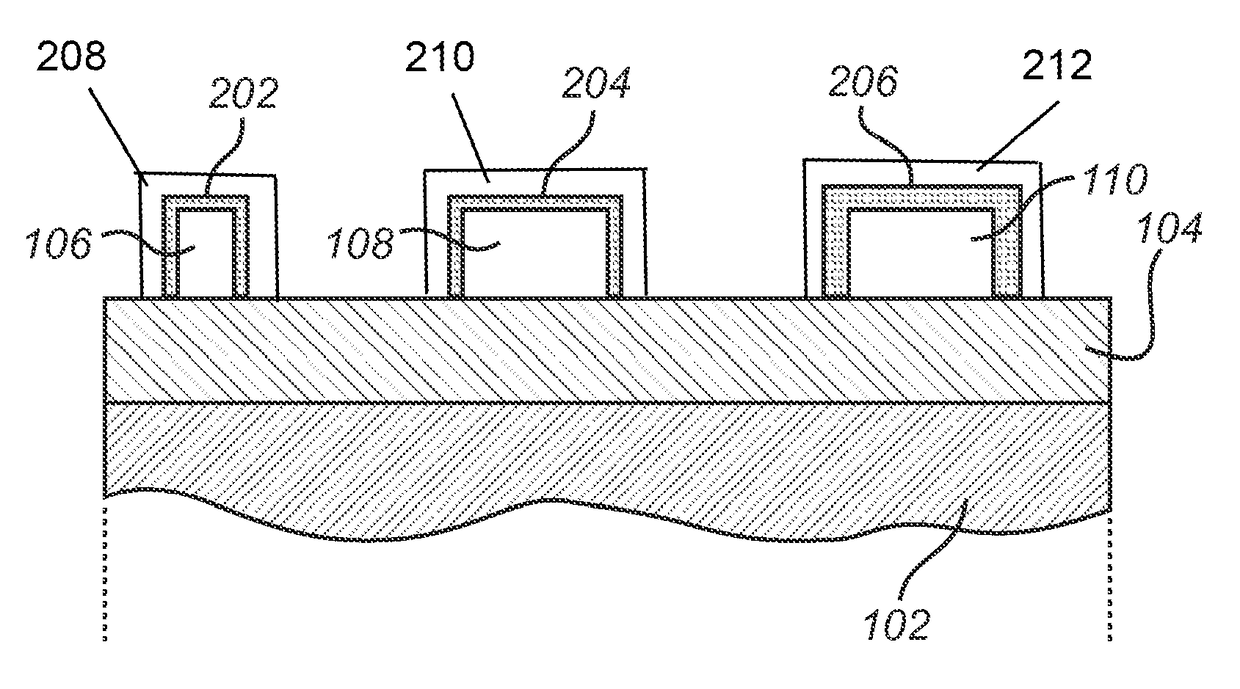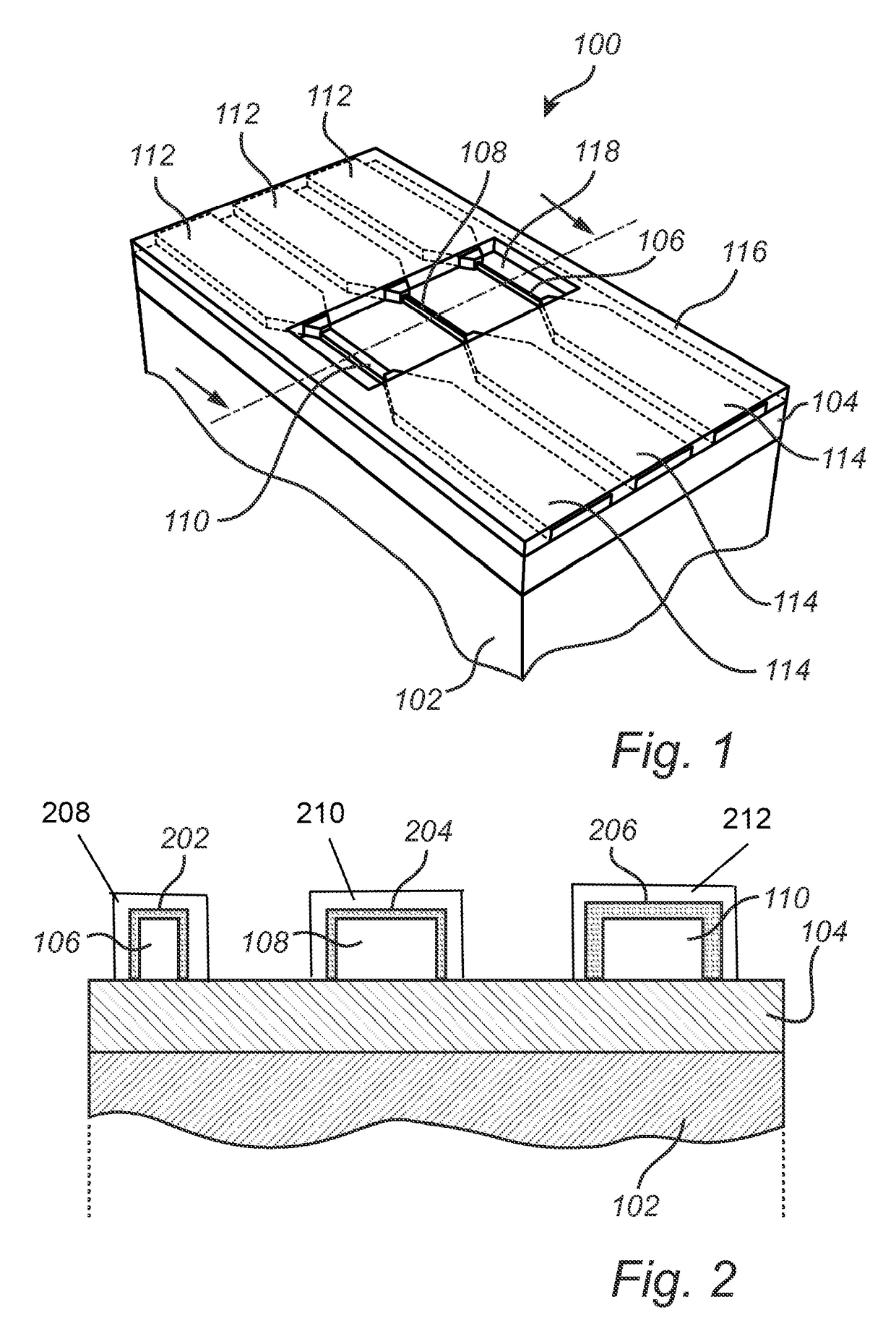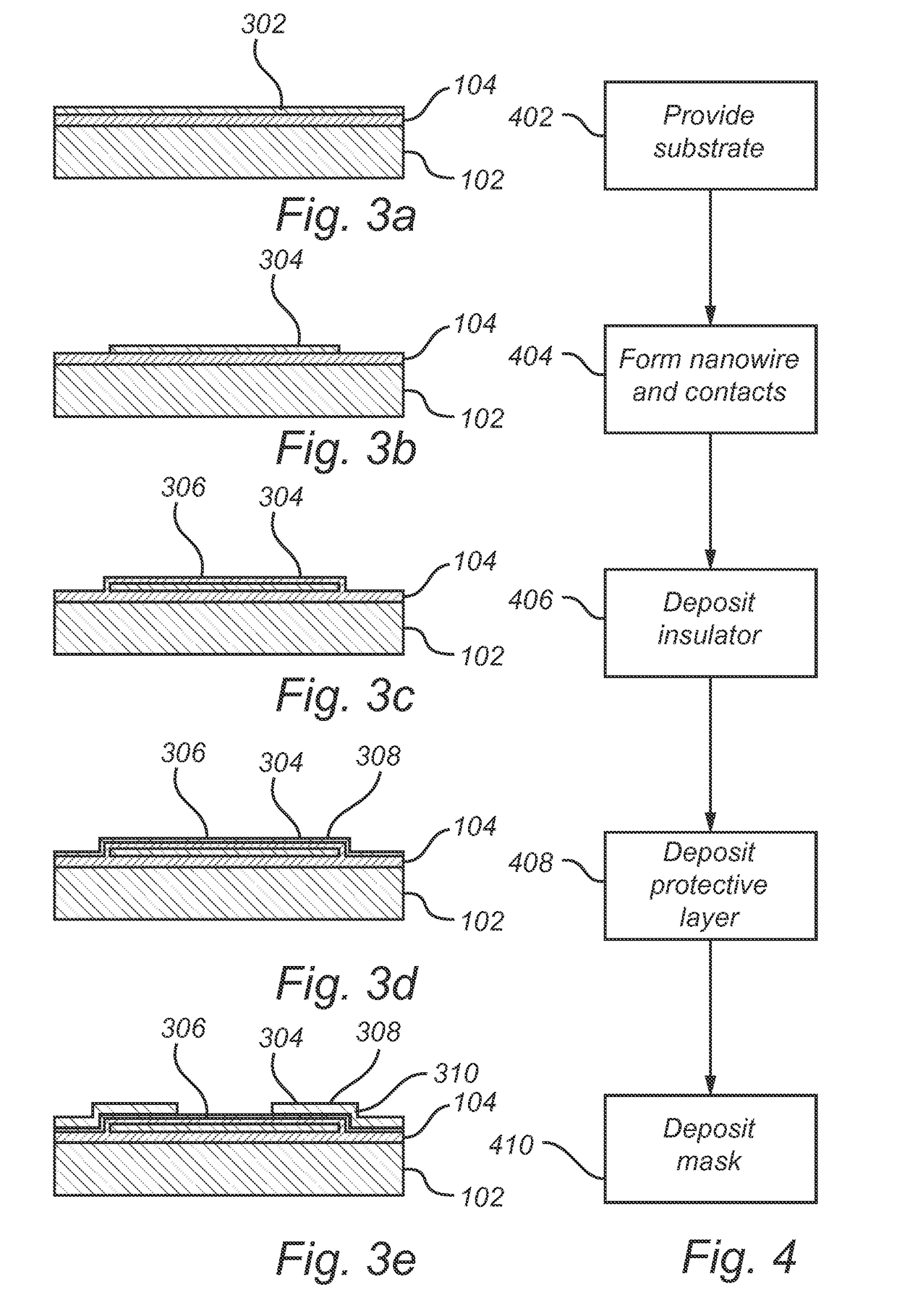Wide dynamic range fluid sensor based on nanowire platform
a nanowire and fluid sensor technology, applied in the field of nanowire-based devices, can solve the problems of low dynamic range of high-sensitivity sensors, and achieve the effects of reducing processing complexity, saving cost, and saving further cos
- Summary
- Abstract
- Description
- Claims
- Application Information
AI Technical Summary
Benefits of technology
Problems solved by technology
Method used
Image
Examples
Embodiment Construction
[0051]In the present detailed description, various embodiments of a device according to the present invention are mainly discussed with reference to a device comprising silicon nanowires based on an SOI (silicon-on-insulator) substrate. It should be noted that this by no means limits the scope of the present invention which is equally applicable to devices comprising nanowires based on other semiconductor materials which also may be formed on other types of substrates.
[0052]FIG. 1 schematically illustrates a device 100 according to an embodiment of the invention. It should be noted that the device in FIG. is not drawn to scale and that the purpose of the drawing merely is to illustrate the general concepts of the invention.
[0053]The device 100 comprises a substrate 102, an insulating layer 104 arranged on the substrate 102, three nanowires 106, 108, 110 arranged in parallel are formed in the top silicon layer of an SOI-substrate. There is further illustrated conductive contacting st...
PUM
| Property | Measurement | Unit |
|---|---|---|
| width | aaaaa | aaaaa |
| widths | aaaaa | aaaaa |
| widths | aaaaa | aaaaa |
Abstract
Description
Claims
Application Information
 Login to View More
Login to View More - R&D
- Intellectual Property
- Life Sciences
- Materials
- Tech Scout
- Unparalleled Data Quality
- Higher Quality Content
- 60% Fewer Hallucinations
Browse by: Latest US Patents, China's latest patents, Technical Efficacy Thesaurus, Application Domain, Technology Topic, Popular Technical Reports.
© 2025 PatSnap. All rights reserved.Legal|Privacy policy|Modern Slavery Act Transparency Statement|Sitemap|About US| Contact US: help@patsnap.com



